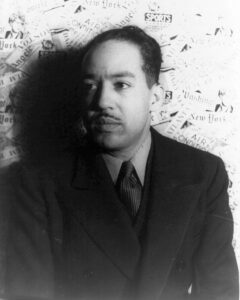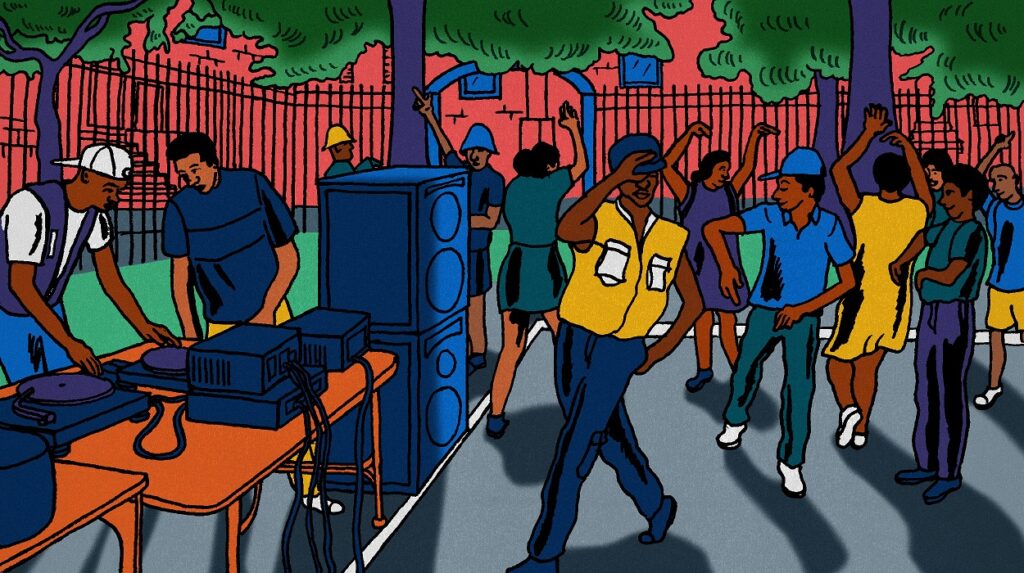African American Culture Characteristics
-by Ishita Mondal
–Reading Time – 8 min Approx
Inter-state or inter-territory culture is nothing new in the world. Since the beginning of human civilization, cultural blends have been quite prevalent around us. Due to colonial expansion, globalization and many other factors, the cultures get mixed with one another. And as a consequence, interesting hybrid cultures are born. We are often mesmerized seeing the interesting blend of accent, tradition, language, food habits, and so on. When the cultures of two territories are mixed, a new creed is born out of it. And a new mixed culture evolves.
For example, we can see the Anglo-Indian culture, Indo-European traditions, etc. However, among all of the hybrid cultures, one is quite interesting to know about. It is African-American culture, a perfect blend of African traditions and American traditions. With a wide range of amazing factors, the African American culture characteristics are enough to entertain you. If you are interested in anthropology, you will definitely be left with awe once you know this culture.
So, how did Africans influence the American culture? And vice versa! How are they left distinct from the mainstream American culture? Here, we will be discussing the details about it. African American culture’s characteristics are highly influenced by the authentic African culture of Western and Central parts of Africa. Also, it has a great impact on European culture prevalent in Southern parts of America. Although due to slavery, the African culture was deeply compromised, there are glimpses of it in this African American culture. Let’s know more about the African American culture characteristics.
African American Culture Characteristics: Who are They:
The creed named African-American is also known as Afro-Americans or Black Americans. It is an ethnic group of Americans with a lineage to the Black racial groups in Africa. We hope you have heard about Barack Obama. He belongs to this group. The special mixed ethnic group contributed a lot to the culture of the United States. Since they emerged as a blended cultural group, many rituals and ceremonies became a part of their culture and tradition.
Along with that, Christianity entered into it. At the early years of the 18th century, Christianity makes its position in North Africa a prevalent religion. This gradually displaces the traditional beliefs and practices from Africa. Eventually, through the enslaved Africans, this complex religious diversity entered into the American culture. The fusion of cultures became an interesting factor to look at.
For years, the African-American culture was a separate ethnic identity that had no connection with American culture. The main reasons for this isolation were:
- Racial Discrimination
- The dominant slavery culture
Due to these factors, the African-Americans were inclined towards creating their own identity by separating their culture from the mainstream American culture. However, nowadays, the situation is quite changed. The ethnicity of Afro-Americans is coming to the limelight with pomp and luxury. And eventually, it has become an interesting area of study under the Anthropology subject.
African-American Culture: The History and Heritage:
Every culture is significant with its own special history and heritage. The culture of Afro-American folks is also no different. It has a rich history of migration, identity crisis, and developing its own identity fighting against discrimination, slavery, and other social evils. In the early 17th century, American slavery was quite prevalent. The slave owners used to put much effort in wiping out the own tradition of African culture from their tradition. Thus, they come up gradually with a mixed cultural identity.
So, in short, a long list of socio-political factors affects the Afro-American culture and tradition. The list includes slavery, followed by slave rebellions, the civil rights movement, etc. However, the culture of African Americans got its recognition first during the time of the Harlem Renaissance. It was an intellectual and cultural restoration of African-American culture characteristics. In the 1930s and 1920s, the cultural revival became much prominent. A wide range of music, dance, and literature was revived through this time.
The world noticed their excellent features that identify their culture among all of the other cultures. The main proponents of the renaissance are Alain Locke, Zora Neale Hurston, Nella Larsen, etc. The eminent poets, authors, and artists took up the art and described the cultural ethnicity of the Afro-American group. Also, it was a time for uprising political movements among the Afro-Americans. The major political movements by them were Universal Negro Improvement Association and the National Association for the Advancement of Colored People.
The Black Power Movement of the early 1900s was a part of the non-violent civil rights movement. Gradually, the Afro-Americans became confident about their identity, and thus, their ethnicity was established.
African American Culture Characteristics: The Music, Arts, Literature, and Others:
Literature:
Afro-American culture has its oral literature rooted back in the tradition of African slaves in America. The folks used to speak the fables, stories, and tales orally. Gradually, the traditional oral stories and sayings influenced the authors and writers later on. In the 18th century, the authors and poets like Phillis Wheatley and Olaudah Equiano got influenced by oral stories and wrote slave narratives.
A wide range of authors and poets, such as Langston Hughes, W. E. B. Du Bois and Booker T. Washington came into the limelight with their artistic abilities to depict the slave stories through words. Many other authors like Richard Wright, James Baldwin, and Gwendolyn Brooks started writing about racial segregation, oppression, and many other diverse factors in African-Americans’ lives.
Art:
Now, coming to art, we can say that since the birth of African American culture, art has become a significant factor in identifying the group from other mainstream American ethnic groups. The curious people learning about black culture pay special attention to the instances of art created by eminent Afro-American artists. The artists from the African American population depict the slave narratives along with other multiple aspects of the ethnic group.
Art came in many forms. From the ceramic pots, iron figurines to quilting and various artifacts- the list is endless. Gradually, the artistic features were developed, and more polished artistic masterpieces came out of them. Initially, African-American art did not get much appreciation due to racial discrimination and other factors. But, eventually, things changed.
After the American Civil War took place, the museums and the art galleries in the towns started showcasing the art of African-American culture. It became the epitome of freedom of cultural expression. However, the display was still limited at that time. Due to the strong dominance of European art, the artistic expression of Blacks was subdued to some extent. Many Afro-American artists moved to Europe to get a better audience. However, after the Harlem Renaissance emerged, the art began to receive acknowledgment and appreciation both from the people. Renowned artists like Aaron Douglas, Augusta Savage, Elizabeth Catlett, etc., became popular with their artistic talents.
Music:
Another significant part of Afro-American culture is music and dance. Their unique tune and unparalleled dancing styles mesmerize the whole world. The music is influenced by polyrhythmic music that originated in Africa. Majorly, it is popular among the groups of people living in the Western, Central, and Southern parts of the African continent. African oral traditions also significantly influenced the music of African American culture. You can see it in the components of their music: improvisation, swung notes, blue notes, syncopation, percussion, melisma, and complicated harmony. Together, they create amazing tunes to mesmerize the people. While entering America as slaves, the Africans blended traditional European music with authentic African tunes. Thus, beautiful hymns are created by them.
If you pay attention, you will see the African Americans prefer to add “Lift Every Voice and Sing” to the American national anthem titled as “The Star-Spangled Banner”. Sometimes, you can see team singing the first one only instead of “The Star-Spangled Banner.” The song “Lift Every Voice and Sing” is the symbol of the past struggles and hardships the Afro-Americans faced previously. And singing this song denotes a new glimpse of hope, faith, and solidarity. You can also have a look at their special instrument called Banjo. It is considered to be the first Afro-American musical instrument that was played in the United States.
The growth of African American cultural movement of the late 1900s accelerated funk and hip-hop forms. The innovative hip-hop forms were rap, hip house, go-go, etc.
African American dance, like its music, is influenced deeply by African ethnic existences. For example, turfing is a hood dance which depicts the loss of African-American lives, severe police brutality and racial discriminations in Oakland, California. The dance, with all its exceptional movements, became an expression of freedom for the Black identity. Another dance form is known as twerking. It has its origin in different parts of Africa, including Congo, Somalia, Senegal, etc.
Food:
It is interesting to observe how Afro-Americans prepare their foods and eat them. You can consider a staple food named “gumbo”. You can barely find any written recipe for it. The Afro-Americans mostly pass the recipe orally. They are known for their exceptional culinary skills. The inclusion of left-over things to prepare stew-like dishes has somehow become their identity. They are popular for making delicious delicacies out of left-overs. So, the African American culinary skill is all about bringing taste out of the tasteless.
If you look at agriculture in the USA, you will see how did African culture influence American culture. The yams, peanut, rice, and cotton, indigo dyes are largely influenced by African tradition.
Along with these factors, there are significantly notable features in respect to family structures, religion, attire, language, and so on. While the Afro-Americans belong to diverse religions, i.e., Judaism, Islam, and Christianity, their vernacular English includes many pidgin and slang terms. So, that is how African-American culture became a significant ethnic identity in the world with all of its diverse aspects.
African American Culture Characteristics- At a Glance:
- An individual is called African-American when he lives in the United States speaking English, but the ancestors were from Africa.
- A first-generation African immigrant with American citizenship can also be called African American.
- The black skin is due to their Sub-Saharan African ancestors.
- The African American people consider the term “Negro” as offensive.
- Protestant Christianity is the most popular religion among African Americans.
- Two well-known holidays in the Afro-American culture are Kwanzaa and Juneteenth.
- Dreadlocks and Cornrows are two famous African-American hairstyles.
- Many Africans came to the Southern United States through the Atlantic Slave Trade.
- Nearly 38% of African Americans have Irish ancestry.
Final Thoughts – The Combined Culture:
So, thus, the African American culture characteristics became significant in creating a diverse ethnicity across the world. With their distinguished features, they established their name as a creed.
-by Ishita Mondal
Dear Reader, Hope you liked the post. If you think our initiative “The Creative Post” is worth supporting, then please support us by paying the amount you think we are worthy of. We believe, the value of content should be decided by the consumer. Hence we request you to evaluate our worth and pay accordingly by Clicking Here.


